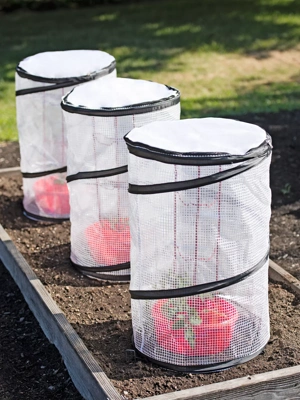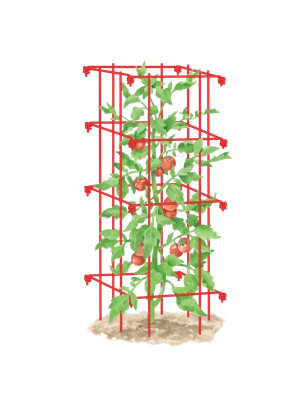How to Control Blossom End Rot on Tomatoes
 Blossom end rot.
Blossom end rot.What is Tomato Blossom End Rot?
Blossom end rot is a common garden physiological disorder caused by a lack of calcium within the plant. It can occur in pepper, squash, cucumber, and melon fruits as well as tomatoes. It is NOT caused by an insect (so don't attempt to apply insecticide all over your garden).
 Photo: Susan Romanoff
Photo: Susan RomanoffBlossom end rot is most common when the growing season starts out wet and then becomes dry when fruit is setting. A water-soaked spot at the blossom end of tomato fruits is the classic symptom of blossom end rot, and damage first appears when fruits are approximately half their full size. The water-soaked areas enlarge and turn dark brown and leathery. These areas will eventually begin to rot, so the fruit should be picked and discarded.
What causes Tomato Blossom End Rot?
Your garden soil may simply lack the necessary calcium needed for fruits to form. More commonly, however, the soil has plenty of calcium but the plant cannot take it up. Several factors can limit a plant's ability to absorb enough calcium for proper development, including:
- fluctuations in soil moisture (too wet or too dry)
- an excess of nitrogen (N) in the soil
- root damage due to cultivation
- excessively cold soil
How to Prevent Tomato Blossom End Rot
Avoid the cold: In cold climates, allow soil to warm before planting; cold soils limit nutrient uptake.
Maintain moisture: When the weather is dry, water thoroughly once or twice each week to moisten the soil to a depth of at least 6 inches. Soaker hoses or drip irrigation systems are ideal for this. Apply mulch, such as Red Tomato Mulch, to minimize evaporation and help maintain consistent soil moisture.
Get a soil test: Aim for a soil pH of at least 6.5-7.0.
Skip the N (nitrogen): Use fertilizers that are low in nitrogen and high in phosphorous, such as the GSC Organic Tomato Fertilizer.
Provide calcium: Use a calcium-based foliar fertilizer that can be sprayed right on the plant, such as Tomato Rot Stop.
Keep garden records: You may discover that some tomato varieties are more susceptible to blossom end rot than others.
Last updated: 09/14/2023
Print this Article:
Related items
Get the Dirt
Stay up to date on new articles and advice. Please fill out the information below.

 Tomato Rot Stop
Tomato Rot Stop





